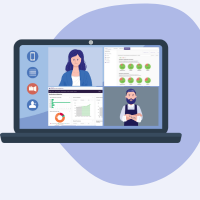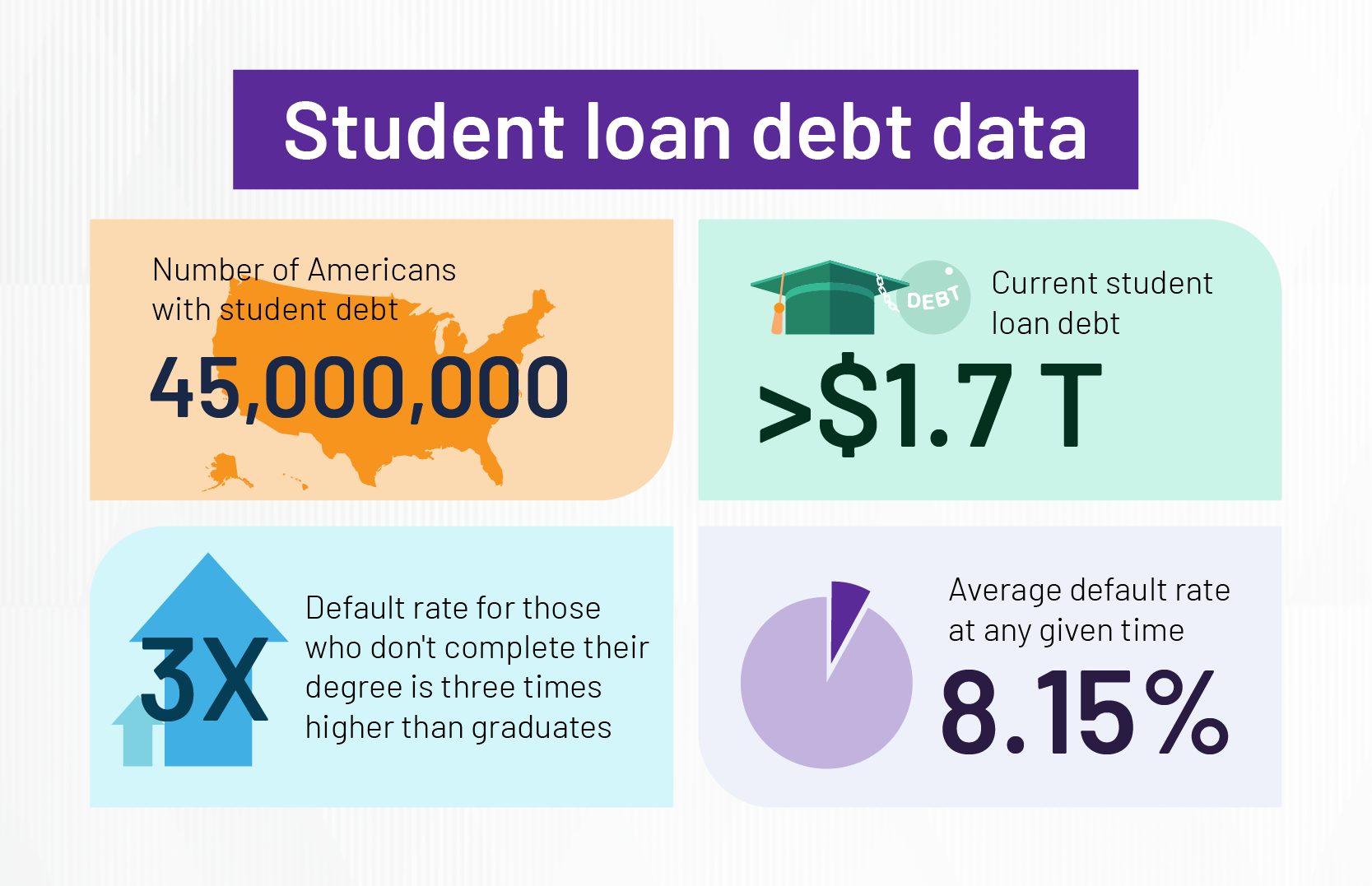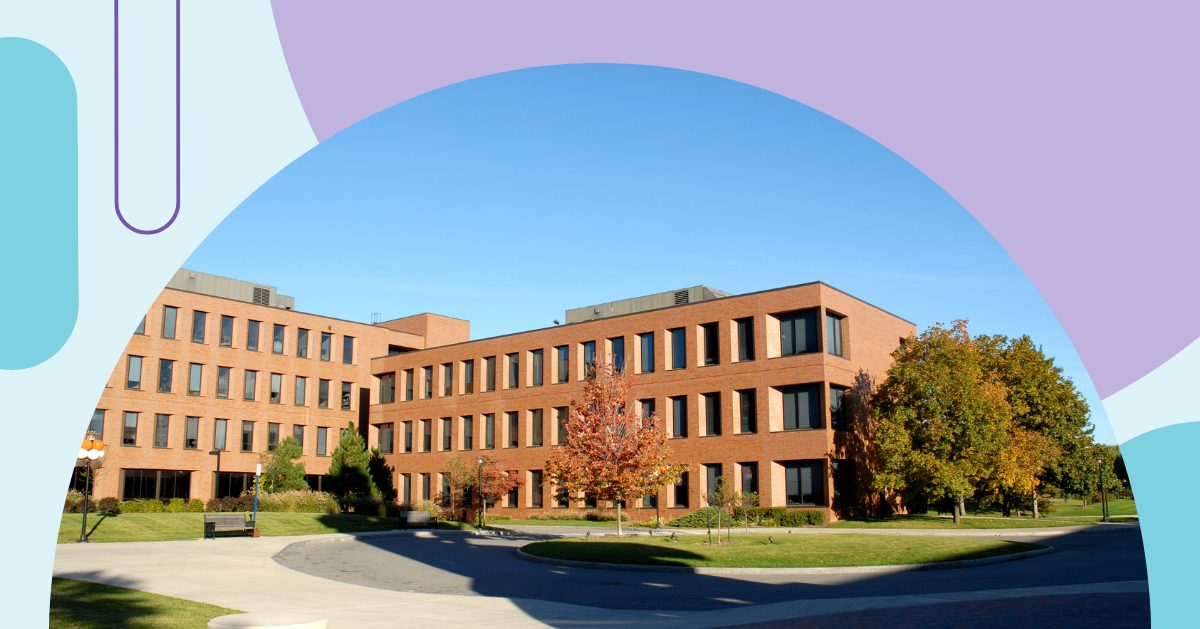
Internships help students in higher education gain valuable working experience and harness career readiness skills that make job placement easier after graduation.
As a college or university, it is essential to assess internship readiness and implement new strategies to support students in these positions. Evaluating preparedness helps your institution ensure its learners feel adequately suited for professional responsibilities.
We are breaking down ways to gauge whether or not a learner is internship-ready and how higher education institutions can help students prosper in a working environment.
The importance of internships in higher education
Internship programs are a valuable part of higher education. They offer students temporary positions that help them gain hands-on experience they don’t get in the classroom. As an intern, students get to test the waters of the real world and take their academic studies to the next level.
Interning can be highly advantageous for college and university students looking to get their foot in the door. These roles are often similar to the lower-level positions at an employer, and learners can gain practical professional experience that can help them secure a paid job after graduation, something that can be difficult for individuals without previous experience in a specific field.

Internships teach students about common workplace norms and proper professional etiquette. They help students practice engagement, punctuality, and productivity — all skills needed to prepare them for jobs after graduation. Being an intern can help individuals determine if a particular job, industry, or discipline is right for them. Having hands-on experience can change how a person feels about their future in that career, and it can be highly useful for finding a suitable career path.
At some higher education institutions, interning is a must for degree attainment. Students often have to partake in one of these positions for a certain amount of time to fulfill their graduation requirements.
Even if an apprenticeship is not a necessity for getting their diploma, students can use these opportunities to establish meaningful connections with other professionals. Networking is a massive perk of working an internship and can increase the likelihood of finding employment after getting a degree. Some employers will hire interns for paid positions if they’ve done a good job throughout the program.
Why does internship readiness matter?
College students should understand both the importance of internships and being ready for one of these positions. Locking down a role as an intern can be challenging for many students. A few key reasons why readiness is essential include:
- Competition: Open internship spots tend to be highly competitive and challenging to secure. Those applying for one of these coveted positions must be able to adequately demonstrate their unique qualifications and eagerness to work. Individuals who are highly prepared and organized are typically more appealing to employers.
- Prerequisites: Some internship opportunities require students to have extensive prerequisites or credentials. They may need to meet a certain credit threshold, compile a portfolio, or have completed certain courses for consideration. Students need to gauge when they are or are not eligible to participate in their desired internship programs and plan their academic schedules accordingly.
- Career goals: Learners should also consider their career goals and the path they want to take after graduation. They should apply for internships that support their objectives and set them up for success in their desired industry. Finding the right opportunity requires forethought and preparation for college students.
Internship readiness will help students get the positions they are gunning for and reap the many professional benefits of participating in these programs.
In addition to helping students gain valuable working experience and thrive in an internship role, your higher education institution should also pay attention to internship readiness for the sake of your relationship with employers. How your students behave and perform in these roles can be a reflection of your college or university. Preparing students is a key part of fostering a positive reputation with the businesses and organizations that your students want to work for in the future.
How to assess internship readiness of students
Your higher education institution has a responsibility to support career readiness initiatives and help students get their footing in the employment world.
Explore the key considerations for assessing if a student is adequately prepared to flourish in an internship position:
Academic performance
One indicator of internship readiness is academic performance. College tends to be a massive adjustment for learners. Between managing the workload from each course, going to class, and balancing a busy schedule, students have a lot on their plates. Introducing an internship into the mix can add more responsibility and weight on a person’s shoulders.
Academic advisors should communicate and work with students before they apply for an apprenticeship. Look at the student’s grades and performance history. Someone who is actively engaged in class, earns high scores, and keeps a positive attendance record likely has the self-discipline and management skills to thrive in an internship.
Academic performance can also be a sign that a student possesses the foundational understanding of the core concepts needed to participate in certain positions. For example, programs that require high-level technical knowledge, such as a position for a research lab or graphic design agency, may want interns who already know how to use the basic tools. Another important factor to keep in mind is whether the student can continue to perform at the desired level while participating in the internship program.
Communication skills
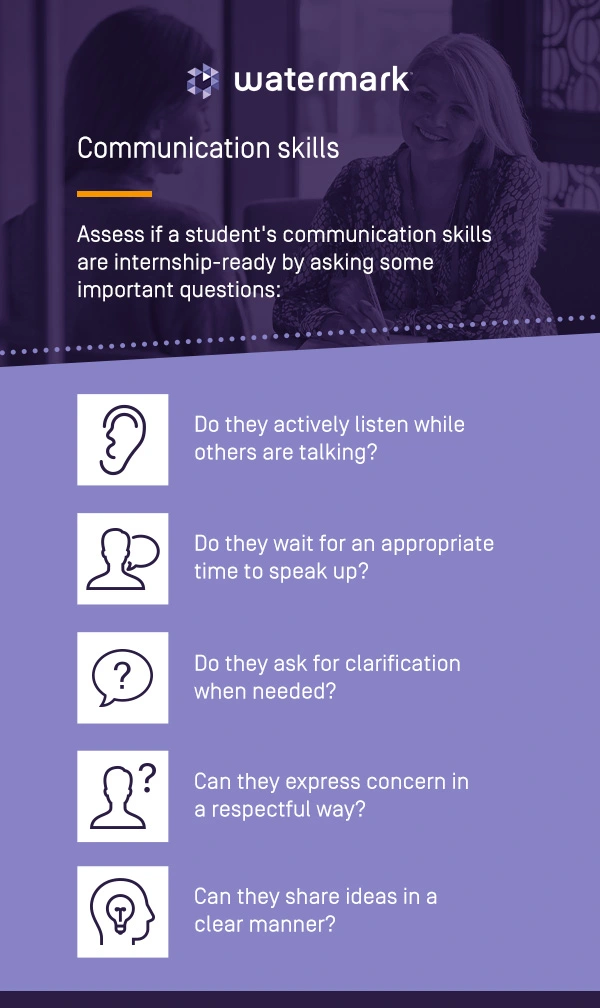
Good communication is an integral part of securing an internship. Students need to understand how to interact appropriately and professionally with their supervisors and colleagues. From the first impression, employers need to know that the interns they hire can collaborate and have meaningful interactions with others.
Assess if a student’s communication skills are internship-ready by asking some important questions:
- Do they actively listen while others are talking?
- Do they wait for an appropriate time to speak up?
- Do they ask for clarification when needed?
- Can they express concern in a respectful way?
- Can they share ideas in a clear manner?
Communication skills are especially valuable for an apprenticeship because they allow students to build positive working relationships. The connections formed through these programs can lead to beneficial mentorship opportunities and future job recommendations.
Some internships also require participants to contribute to the team by sharing their insights, presenting research findings, or pitching ideas. Strong communicators are more compelling and engaging, which makes them more desirable to potential employers.
Professionalism
A student’s understanding of how to behave and interact in a work setting directly correlates with how prepared they are for the responsibility of an apprenticeship. A strong sense of professionalism indicates important qualities, like maturity and reliability, to potential employers.
Explore some of the ways professionalism is essential to internship readiness:
- Work ethic: To thrive in an internship position, students must demonstrate a strong work ethic and willingness to think critically. They must have motivation, practice good time management skills, and actively contribute to the team. A student who cannot commit to delivering high-quality work may not be ready to intern.
- Workplace culture: Every business and organization does things differently. Students can exhibit their professionalism by following the norms and policies in place at their internship. From obeying the dress code to sticking with set protocols, interns need to respect and adapt to the culture.
- Integrity and ethics: Upholding ethical behavior is fundamental to professionalism. To succeed in an internship role, students must have a solid understanding of how to act with honesty and integrity. Maintaining healthy professional boundaries will help individuals contribute to more inclusive and safe working environments.
- Positive collaboration: An internship-ready student knows how to work with others in a fair and collaborative manner. They can have differences in opinions and work to achieve better results for both the team at large and their personal success.
First impressions
Another important aspect of internship readiness is mastering the first impression. Students looking to enter the working world must understand how crucial their initial interactions with a prospective employer are. They have a small window of opportunity to demonstrate why they are right for the role, and one wrong move can compromise their chances of getting hired. For instance, showing up in sweats to an interview at a law office may not leave the most favorable impression.
Students have a few chances to exhibit their internship readiness with potential employers, including writing their resumes, participating in interviews, and gathering references. Professionalism and first impressions go hand-in-hand. Anyone seeking an apprenticeship position should consider how the following can help or hurt their chances of securing a great job:
- Presentation: How an individual dresses and presents themselves to employers is important. Someone prepared for professional responsibilities understands how they want to share themselves with the world and the positive demeanor they want to maintain.
- Communication: Students who are internship-ready understand the value of communicating effectively and accurately. They can write clear, error-free messages and convey unique ideas in an easy-to-understand manner.
- Punctuality: Interns must be able to manage their time and energy. Showing up and completing work on time is the most basic form of respect to an employer. Students must be punctual if they want to succeed.
Soft skills vs. hard skills
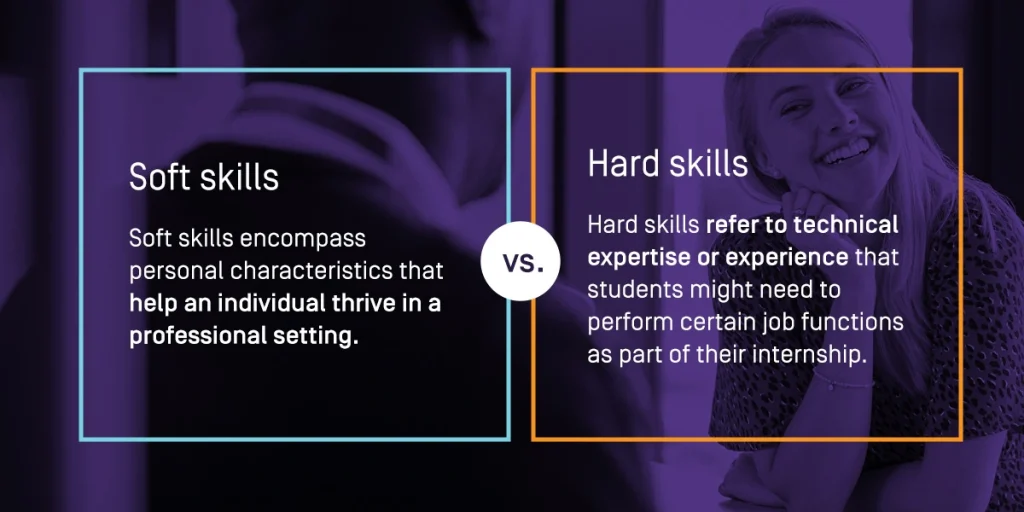
Another important aspect of internship readiness is understanding the differences between soft and hard skills and which are necessary to prosper for a specific program. Soft skills encompass personal characteristics that help an individual thrive in a professional setting. These may include:
- Adaptability: The ability to change and be flexible while handling different challenges and responsibilities.
- Leadership: Inspiring and motivating others through modeling good behavior and taking initiative.
- Emotional intelligence: Understanding how to manage one’s own emotions and empathize with those nearby.
- Critical thinking: Applying logic and evidence to form well-reasoned conclusions and evaluate information effectively.
Hard skills refer to technical expertise or experience that students might need to perform certain job functions as part of their internship. These may include having formal training on a software solution or experience with specific chemicals in a laboratory.
Students must harness both soft and hard skills to be a well-rounded applicant. Employers want to know that the people they introduce to their business or organization are a good fit, both in terms of personal attributes and technical expertise.
Time management
A facet of internship readiness higher education institutions often overlook is a student’s ability to effectively manage their time. We’ve mentioned the importance of good punctuality and completing work by its due date. In addition to these factors, students must understand how to organize their schedules to balance all their responsibilities without overburdening themselves or burning out. Good time management skills are integral to a successful internship experience.
College students must look at their course load, commute, work obligations (outside of an internship), social life, and extracurricular activities. Someone booked from the time they wake up until they go to sleep is likely not in a position to succeed as an intern. When assessing internship readiness, be sure to encourage students to be honest with themselves about their time management skills and current commitments.
Some key factors of good time management include:
- Prioritization: The student is able to look at their to-do list and organize it according to what’s most significant and due first.
- Combatting procrastination: Putting off work can cause undo stress and impact productivity. A student who is ready for an internship must be able to set realistic deadlines and motivate themselves to get things done in advance whenever there is an opportunity.
- Scheduling: Another important factor of time management is creating an agenda that provides structure, clarity, and flexibility. Students need to practice creating a daily and weekly schedule that is conducive to getting their work done and balancing life’s responsibilities.
Internship readiness assessments
With so many aspects of internship readiness to juggle and monitor, higher education institutions may struggle to adequately assess whether or not students have the skills, resources, and guidance to thrive. By establishing an internship readiness assessment, you can streamline the entire process.
Your institution can go about implementing these assessments in a few different ways. First, you could have students complete self-assessments where they explore internship readiness criteria and gauge their personal preparedness. You could also have academic advisors or student support staff conduct assessments through a conversation with students considering applying for an internship role. Either way, your institution should seek to help students determine if they are ready for the responsibility of an internship, or if they need to take steps to become more prepared for a future role.
With the right assessment software, gauging internship readiness is easier and more manageable than ever. Your institution can collect meaningful data to drive decision-making and improve internship resources for students.
Request a demo of higher education software from Watermark today
If your higher education institution is looking to improve student outcomes and prepare learners for the future of work, turn to the solutions from Watermark. With Watermark Student Success & Engagement, your college or university has access to valuable, actionable insights needed to boost retention rates and support degree attainment efforts.
Watermark is here to help your institution monitor student performance, flag at-risk individuals, and validate findings to inform intervention strategies. Supporting your students is simple with the help of our solutions.
Request a demo of the higher education software available from Watermark to get started today.



